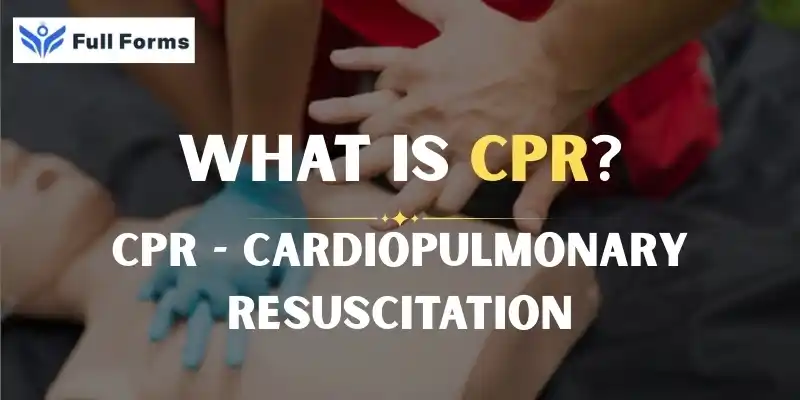Cardiopulmonary Resuscitation
(CPR)

Description
Everyone should know how to do cardiopulmonary resuscitation (CPR) because it can save lives.
Imagine being there when someone suddenly falls down, stops breathing, and their heart stops beating. It's a scary time, but knowing what to do could save your life. This is where Cardiopulmonary Resuscitation (CPR) becomes very important. When the heart stops, CPR is a life-saving emergency procedure that keeps blood and oxygen flowing.
What is CPR?
Cardiopulmonary Resuscitation (CPR) is a life-saving method used in emergencies like cardiac arrest, when a person's heart stops beating. The goal of CPR is to keep blood rich in oxygen flowing to important organs, especially the brain and heart, until professional medical help arrives or the person's heart starts beating normally again.
The heart (cardio) and lungs (pulmonary) are both parts of the word "cardiopulmonary." There are two main parts to CPR:
- To make the heart pump, do chest compressions.
- Rescue breaths (optional for bystanders who aren't trained) give oxygen to the lungs.
When Should You Do CPR?
If someone:
- Is not awake
- Not breathing, or only gasping
- There is no pulse or circulation.
Some common situations that might call for CPR are:
- Heart attack
- Drowning
- Choking
- Electric shock
- Very serious injury
It is very important to act right away. A person's chance of living goes down by about 7%–10% for every minute they don't get CPR.
How to do CPR
The C-A-B method, which stands for Compressions, Airway, and Breathing, is a common way to teach CPR.
1. Check to see if they are responsive and call for help
Tap the person and yell, "Are you okay?"
If you don't get a response, call the police or ask someone nearby to do it for you.
If there is an Automated External Defibrillator (AED) nearby, send someone to get it.
2. Pressures
Put the heel of one hand on the person's chest and the other hand on top of it.
Push hard and fast with your arms straight, at least 2 inches deep and at a rate of 100 to 120 compressions per minute (like the beat of the song "Stayin' Alive").
Let the chest rise all the way up between compressions.
3. Airway
After 30 compressions, tilt the person's head back a little to make it easier for them to breathe.
4. Breathing
If you're not trained, you don't have to give two rescue breaths; just doing compressions is better than doing nothing.
The chest should rise with each breath, which should take about a second.
Do the cycle of 30 compressions and 2 breaths again and again until help comes or the person starts to breathe normally.
CPR with only your hands
If you don't know how to give rescue breaths, it's best to do hands-only CPR. This means:
- Call the police or fire department
- Start compressing the chest right away.
- Don't stop until a professional takes over.
Hands-only CPR works well, especially for adults who have had a heart attack, and it's easier for people who aren't trained to do it.
CPR for babies and kids
The principles of CPR are the same, but the way you do it is a little different for kids and babies:
- When doing chest compressions on kids, use one hand.
- For babies, use two fingers.
- Unless told otherwise, keep doing 30 compressions and 2 breaths.
Why CPR training is important
Not only doctors, nurses, and emergency responders can do CPR. Anyone can learn it, and it can make a huge difference. A lot of heart attacks happen outside of hospitals, like at home, school, or work. Every year, thousands of lives could be saved if more people knew how to do CPR.
The Red Cross, the American Heart Association, and many local health departments all offer training programs. You can learn what you need to know and feel confident enough to act in a life-or-death situation in just a few hours.
The Function of AEDs
A portable Automated External Defibrillator (AED) can shock the heart back into a normal rhythm. People often use it with CPR. AEDs are easy to use because they have voice prompts that help people who don't know how to use them.
Final Thoughts
Cardiopulmonary Resuscitation (CPR) is a simple but powerful skill that can save a life when every second counts. If you know how to do CPR, you could be the difference between a tragedy and a second chance at life for someone you know or don't know.
It's easy to learn CPR, it doesn't take long, and it gives you the power to do something in an emergency. Get trained and be ready to save a life; don't wait until it's too late.
